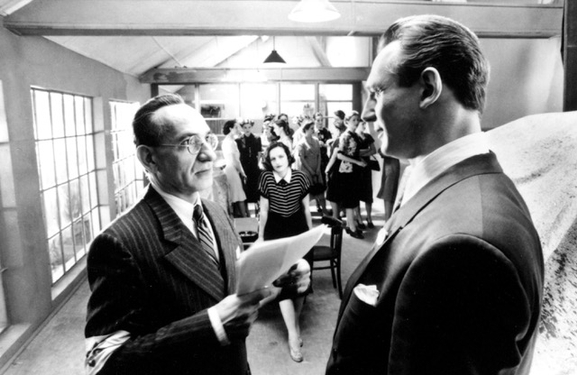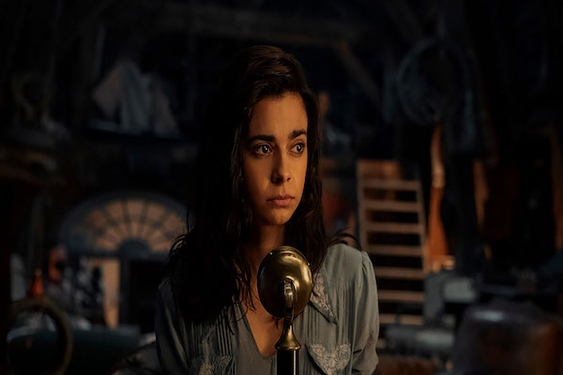The last new member added to the Pantheon of Exalted Holiday Classics was Bob Clark’s A Christmas Story – released 21 years ago! Last year’s gentle Will Ferrell comedy Elf may charm its way into the hall, and the current The Polar Express certainly expresses all the right messages. But most of Hollywood’s recent Christmas movies have been lumps of something worse than coal – including this season’s dumb and dumber entries, Surviving Christmas and Christmas with the Kranks.
These cynical, slapstick confections mock holiday tradition, then tack on redemptive endings that are without a whit of conviction. If the filmmakers don’t believe in their material, how can they expect us to?
The answer is, we don’t.
Surviving Christmas with Ben Affleck, released in late October, barely survived Thanksgiving. It will end its run with less than $15 million in ticket sales. Christmas with the Kranks opened Nov. 24 to some of the year’s most pained reviews and did a less-than-stellar $31.2 million over the long Thanksgiving weekend.
These movies could stand on each other’s shoulders and still not be able to see the classics – even if they used a boost from Ron Howard’s’ labored Dr. Seuss’s The Grinch Who Stole Christmas and Billy Bob Thornton’s bawdy, drunk, filthy-mouthed Bad Santa. So, what’s up? If Americans are still desperate for holiday movies – and people who bought tickets to Surviving Christmasand Christmas With the Kranks were nothing if not desperate – why can’t Hollywood make ’em like them like they used to?
The answer, in a roasted chestnut-shell, is that the film business and American culture aren’t what they used to be.
With the exception of A Christmas Story, the movies we regard as evergreens were made before the breakup of the studio system and the cultural revolution. Through the 1930s and ’40s and into the ’50s, Hollywood made one-size-fits-all products, movies conceived and created with the entire family in mind.
In the pre-TV era in which so many classic holiday movies were made, the local Bijou was the family attraction, and filmmakers took into account the age range and interests of their audiences.
Take Henry Koster’s 1947 The Bishop’s Wife, starring David Niven as a distressed bishop, Loretta Young as his neglected wife and Cary Grant as an angel who responds to his prayer for guidance.
The couple has a small child for kids to identify with, and the angel whips up some mighty entertaining miracles – like decorating the Christmas tree with the wave of his hands.
But what makes The Bishop’s Wife a classic is the romantic tension between the wife and the smitten angel, and the growing insecurity of the bishop. It’s mature stuff that doesn’t get in the way of the kids’ enjoyment – such as when the bishop gets his butt glued to a chair.
Frank Capra’s 1946 It’s a Wonderful Life is a dark movie with many bright spots and one of the greatest endings. And it, too, is laced with sexual tension.
The scene where James Stewart’s George Bailey throws away his dreams of travel for Donna Reed’s Mary Hatch after becoming intoxicated by the smell of her hair, is one of the most powerful romantic moments in film – and way, way over kids’ heads.
Look how the culture has changed. "Family movies" are now those that appeal to adults and pre-pubescent children. Teenagers are now a separate category, as are young adults without kids.
Instead of making movies with overlapping content appealing to each age group, we have separate classes of movies organized by the 36-year-old ratings system. Each rating has its commercial advantages and limitations, and it’s the rare exception that has across-the-board appeal.
The closest that modern films come to having the double layers of content for family audiences is in animated features like Shrek and Shark Tale, where kids are mesmerized by the colors, characters and action and their parents are kept alert by the pop references.
The business of distributing films has changed, too. Though a good Christmas movie can still make it into holiday TV syndication, that’s not where the big money is. A movie has to have a video afterlife these days, and films that people are likely to buy or rent only during the holidays don’t have great prospects. Video chains aren’t going to stock them in large numbers year-round.
© 2004, New York Daily News. Distributed by Knight Ridder/Tribune Information Services.











